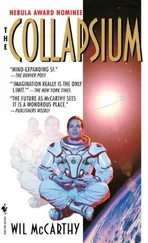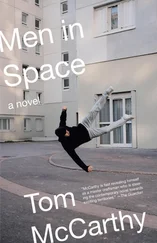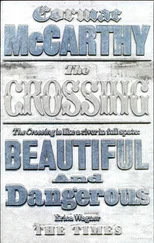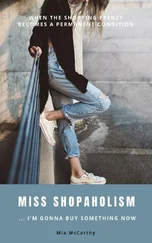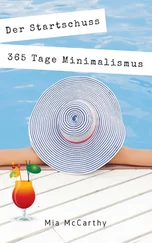“So select several people, and have them work in shifts just like the re-enactors. Rotate them as well.”
I went back five times over the next two weeks to watch the liquid blue explosion and the events leading up to it being re-enacted. In some of the sessions I was pretty analytical, concentrating on several things simultaneously. They were short enough to do that. So three minutes in I’d pay particular attention to what happened just after the oldest boy pushed aside the middling boy’s hand-how the middling boy turned aside to confront the youngest one. Or I’d watch for the car’s route. Its tyres left markings on the warehouse floor; as the sequence was repeated it drove back over its own tracks-sometimes slightly to the left or right, sometimes more or less exactly covering a previous set. On my third visit I had an idea:
“I’d like the car’s route to be changed,” I told the driver re-enactor.
“How do you mean?” he asked. He looked very tired.
“Instead of reversing out this way when you go to take up your position at the end of every sequence,” I said, “I want you to drive the car on forwards, and turn round, and leave along there, and then turn round the other way to come back in.”
“So I’d be doing a figure of eight?” he asked.
“Exactly,” I said.
The change was implemented. Over the following hours and days the car deposited across the floor an eight-a thick black line of run-together turrets and plateaux out of whose edges individuated lines and corners slightly rose, records of the wildest routes. Just to the right of this a large, sticky patch made by the repeated gushing of hundreds of litres of blue liquid stained the floor. I sketched small parts of line and patch in detail, and pressed sheets of paper straight onto them to make prints, which I then stuck to the walls of my flat. If I stared at them for long enough they took on shapes: birds, buildings or the interlocked sections of space stations-and my whole mood would slide from analytical to dreamy. The same slide happened at the re-enactment scene itself. One minute I’d be really concentrating on an aspect of the sequence and the next I’d let the movements mesmerize me, like a bird charmed by a snake: the Fiesta slowly rolling through its well-worn eight, the tyre floating on the boy’s knee to the workshop, his hand pushing the hand of the other boy away, the gliding clamps, the gushing blue-monotonous, hypnotic, endlessly repeating.
In these moments the episode’s sounds took on the aspect of a lullaby. The re-enactors’ voices echoed off the corrugated ceiling; above this, low-flying aeroplanes passed by, whistling and groaning as they left for or arrived from who knows where. The exploding liquid made a rushing, then a trickling sound. The fan hummed from before the beginning of each run-through to after the end. Other sounds emerged from the scene’s edges, from beneath its surfaces-sounds hidden in the enclave where the scraping of the middling boy’s foot met the rustle of the youngest one’s Michelin Man suit, or where the gush of liquid met the roof’s vibrations. Occasionally these sounds seemed to become voices, speaking words and phrases I never quite managed to make out.
I spent a lot of time there, watching. I also spent a lot of time sitting in my living room staring at the sketches and prints, or lying in my bath thinking about the re-enactment, knowing that it was continuing, constantly, on a loop. Sometimes I really concentrated on each moment, each manoeuvre; but sometimes I thought of other matters altogether. For a couple of days I returned to the study of my building, keeping the whole place in on mode for two ten-hour stretches with only two hours’ break between them. Then I drove back out to Heathrow and watched the tyre sequence through fifteen times.
On this particular day I requested another change to be implemented. I called Frank and Annie out to the warehouse and asked them:
“Is there any way that you could make the blue liquid not gush out?”
“Well, of course,” said Frank. “We just don’t make it gush. We de-activate the trigger.”
“Yes, but then the liquid would stay in the reservoir, right?” I said.
He nodded yes. I told him:
“That’s no good. I want it so that it disappears from the reservoir, then doesn’t reappear again. Just disappears.”
Annie and Frank looked at one another. Then Annie said, sheepishly:
“But that’s impossible.”
“I know,” I said, “but that’s the…I mean, isn’t there some way you could make it happen?”
There was another pause, then Frank replied:
“Not really, no.”
“I want it to go up,” I said, “even if it’s harder-hard, I mean. Disappear upwards. Become sky.”
They both thought about this for a while. Then Frank said:
“We could make the liquid travel upwards. In a tube, for example. We could lead a tube up from the holding tank towards the ceiling. We could even feed it through the roof and have it all sprayed upwards in a fine mist. But that’s…”
“I like that,” I said. “Try it. Try some other things along those lines too. See what you can come up with.”
Driving back to Brixton that day, I decided to detour past the original tyre shop. I was alone, driving my Fiesta. As I approached the railway bridge just before the shop, I noticed that the traffic in front of me was being held up. Some cars were turning round and heading back in the direction I’d just come from. I understood why when I was twenty or so feet from the traffic lights beside the bridge: there was a police cordon beyond them, demarcated by a line of yellow-and-black tape. It was the same type of tape they’d used to demarcate the siege zone two months before the accident-only that had been a hundred or so yards away, beyond the tyre shop. This new zone started near the phone box I’d called Marc Daubenay from, and ran down Coldharbour Lane, which was empty save for policemen standing and walking around.
I drove up to the tape and, ignoring a traffic officer’s signal to turn round, pulled my Fiesta to one side, stepped out and walked up to him.
“What’s happened?” I asked.
“Incident,” he answered. “If you’d like to turn round and go back to the next intersection…”
“What type of incident?” I asked.
“Shooting,” he said. “Please go back to your car and…”
“Who was shot?” I asked.
“A man,” he said. “We don’t hand information out to onlookers. If you’d please return to your car and proceed back up to the next intersection…”
The small radio on his shoulder crackled, and a voice said something I couldn’t pick up. I peered beyond him. There were two police motorbikes standing in the middle of the street, plus several cars: three normal white police cars, a white police van, one of those special red cars and an unmarked metallic blue car with a magnetized light mounted on its roof. Two men in white boiler suits were walking down the middle of the road.
“You have to go back,” the traffic policeman told me. “You can’t leave your car there. You’ll have to detour via Camberwell or the centre of Brixton.”
“Detour,” I said. “Yes, of course.”
I snatched one more look across his shoulder, then got back into my car and drove off. When I walked into my flat, I heard Naz’s voice on my answering machine, leaving a message. I picked my phone up.
“It’s me,” I said. “The real me. I’ve just walked in.”
“I was just leaving you a message about Frank and Annie’s idea. They’ve devised this idea for the liquid. You requested…”
“Listen,” I said. “I’d like to find out about something.”
“Oh yes?” Naz said.
“There’s been some kind of incident on Coldharbour Lane,” I told him. “A shooting. I should like to know what happened.”
Читать дальше

